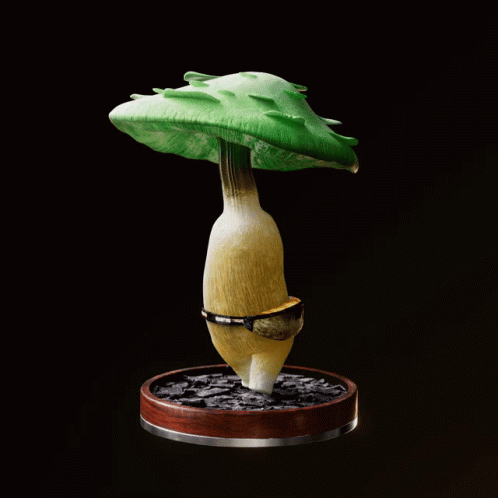Explore the intriguing Banana Paradox: When the Philippines’ ‘Yellow Gold’ faces threats from an invisible adversary. Discover the challenges, solutions, and the impact on this vital industry.
Introduction
The Philippines, known for its pristine beaches and rich cultural heritage, is also famous for its vibrant banana industry. Often referred to as the ‘Yellow Gold,’ bananas have played a crucial role in the country’s economy. However, this seemingly thriving industry faces a peculiar challenge – the Banana Paradox. In this article, we will delve deep into this enigmatic issue that threatens the Philippines’ ‘Yellow Gold.’ We will explore its causes, consequences, and potential solutions, shedding light on a problem that has far-reaching implications.
The Yellow Gold of the Philippines
Bananas are not just a fruit in the Philippines; they represent a significant part of the nation’s identity and economy. This versatile fruit is not only consumed domestically but also exported to various parts of the world, contributing substantially to the country’s revenue. Let’s understand why bananas hold such a prestigious position in the Philippines.

A Historical Perspective
The cultivation of bananas in the Philippines dates back to the colonial era when Spanish explorers introduced this exotic fruit to the archipelago. Over the centuries, bananas became an integral part of Filipino culture and cuisine.
Economic Backbone
The banana industry is one of the pillars of the Philippine economy. It provides employment to thousands of Filipinos, from farmers to factory workers, and generates substantial foreign exchange through exports.

Nutritional Value
Bananas are rich in essential nutrients, making them a staple in the Filipino diet. They provide energy, vitamins, and minerals, contributing to the overall health and well-being of the population.
The Banana Paradox Unveiled
Now, let’s unravel the mystery behind the Banana Paradox, which threatens this vital industry.
The Panama Disease
The unseen enemy that haunts Philippine bananas is the Panama Disease, caused by the Fusarium fungus. This devastating disease attacks the roots of banana plants, making them wither and die. What makes it paradoxical is that it’s invisible, lurking beneath the soil until it’s too late.
Vulnerable Varieties
The most commonly grown banana variety in the Philippines is the Cavendish banana. Unfortunately, it is highly susceptible to the Panama Disease, putting the entire industry at risk. This vulnerability is a significant factor in the paradox.
Environmental Impact
The Banana Paradox doesn’t stop at economic consequences. It also has severe environmental repercussions, as vast banana plantations are often carved out of precious rainforests.
The Battle Against the Paradox
Efforts to combat the Banana Paradox are underway, as the Philippines recognizes the need to protect its ‘Yellow Gold.’
Resistant Varieties
Scientists are working tirelessly to develop banana varieties resistant to the Panama Disease. These efforts aim to secure the industry’s future and reduce its vulnerability.
Sustainable Farming Practices
To mitigate the environmental impact, sustainable farming practices are being promoted. This includes reforestation initiatives and organic farming techniques.
Global Collaboration
The Philippines is collaborating with international organizations and neighboring countries facing similar challenges. Sharing knowledge and resources is crucial in the fight against the Banana Paradox.
FAQs
What is the Banana Paradox? The Banana Paradox refers to the conundrum faced by the Philippine banana industry, where its most valuable export, the Cavendish banana, is under threat from an invisible adversary, the Panama Disease.
How does the Panama Disease affect bananas? The Panama Disease is a fungal infection that attacks the roots of banana plants, causing them to wither and die. It ultimately leads to the death of the entire plant.
Why is the Cavendish banana vulnerable to the Panama Disease? The Cavendish banana is vulnerable to the Panama Disease due to its genetic susceptibility. This makes it an easy target for the fungus.
What are the economic consequences of the Banana Paradox? The Banana Paradox has significant economic consequences as it threatens the livelihoods of thousands of Filipino farmers and impacts the country’s export revenue.
Are there any solutions to the Banana Paradox? Efforts are being made to combat the Banana Paradox, including the development of disease-resistant banana varieties and the promotion of sustainable farming practices.
What is the environmental impact of the Banana Paradox? The Banana Paradox has environmental consequences as it often leads to deforestation when vast banana plantations are established.
Conclusion
The Banana Paradox is a critical issue that demands attention and action. As the Philippines’ ‘Yellow Gold’ faces threats from an unseen enemy, it’s essential to recognize the importance of this industry and work collectively to protect it. Through scientific innovation, sustainable practices, and global cooperation, we can ensure that the banana industry continues to thrive, benefiting both the Filipino people and the global market.




